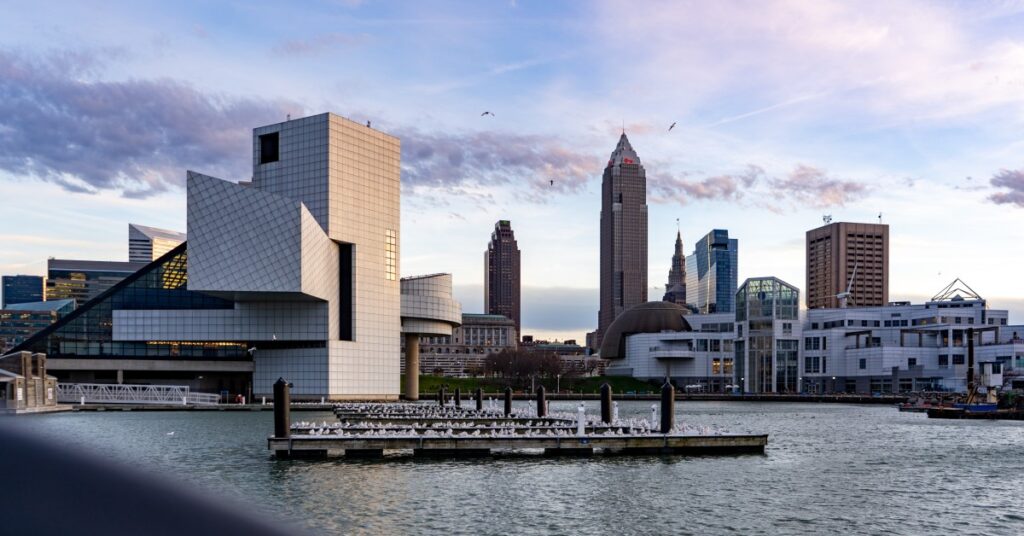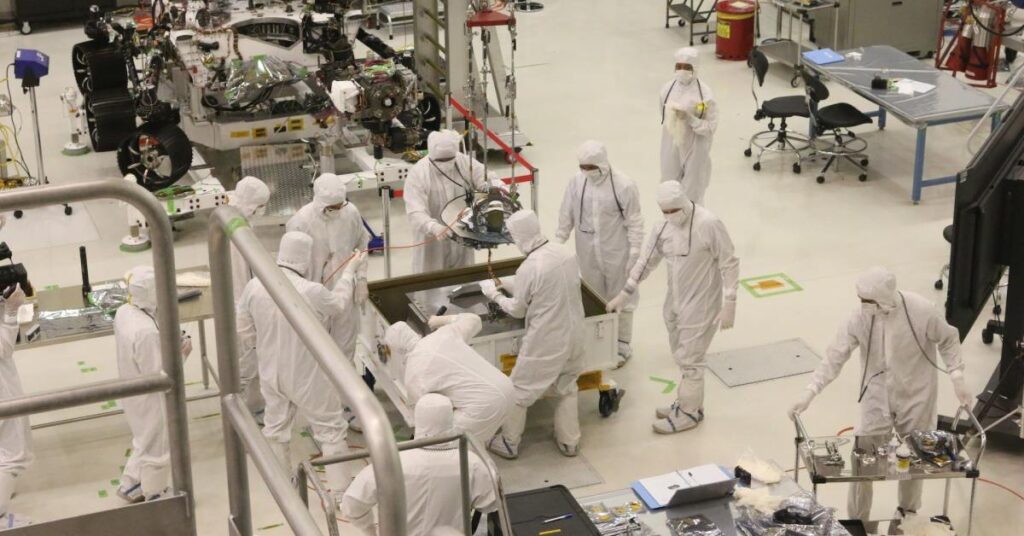
How to Choose an Online MBA
Online MBA programs make their degrees available to everyone everywhere, [...]

In the 21st century, adapting to change constitutes the most crucial challenge to businesses. In the book The End of Competitive Advantage, strategy expert and Columbia Business School professor Rita Gunther McGrath argues that the concept of sustainable competitive advantage is irrelevant to today’s business strategy.
Instead, she argues, focusing on transient advantage and disruptive innovation represents the best strategy for traditional businesses and entrepreneurs.
What do these terms mean, and how can we apply them to corporate entrepreneurship? We explore those questions in this article. We also address:
A business with assets that offer a favorable long-term position is said to possess a sustainable competitive advantage. McGrath argues that business strategies reliant on competitive advantage have grown obsolete under today’s business conditions. Transient advantage—the constant shift in advantage experienced by businesses in our interconnected global economy—is the new gold standard that ensures steady long-term growth for companies.
McGrath debunks several long standing received truths regarding competitive advantage. First, she points out that competitive advantage fosters a reliance on a presumed stability that no longer exists. In our dynamic and competitive economy, having a primary focus on stability means taking a step backward.
She also points out that, in today’s markets, a company’s competitors may emerge from outside the company’s field or vertical. For example, the digital revolution—led by the rise of the internet and smartphones—has shrunk, bankrupted, or decimated manyl businesses, despite not being a within-industry competitor for any of them. The CD and retail industries offer prime examples of businesses completely disrupted by the internet. McGrath also shares the examples of Kodak, Blockbuster, and Research in Motion (now BlackBerry) to illustrate how companies can fail if they refuse to adapt to competitors from different industries.
In response, McGrath proposes the concept of competitive arenas. Businesses must anticipate how operators in entirely different industries could run their companies out of business. This volatile business atmosphere requires traditional businesses and upstart entrepreneurs to build flexible strategies.
| University and Program Name | Learn More |
|
Pepperdine University:
Online Master of Business Administration
|
|
|
Stevens Institute of Technology:
Online Master of Business Administration
|
|
|
Merrimack College:
Master of Science in Leadership
|
|
|
Merrimack College:
Master of Science in Management
|
|
|
The University of Tennessee:
Online Master of Business Administration
|
McGrath offers a new strategy playbook for companies that need to adapt to survive and thrive in today’s constantly changing business environment. She outlines six tenets, each spanning a chapter.
Find a balance between stability and agility: focus on moving from advantage to advantage and from arena to arena. For a successful company that wants to follow this strategy, innovation should be the norm, not the exception.
McGrath explains that startups that can pivot quickly have a significant advantage compared to traditional companies. Ingraining continuous reconfiguration in the early stages of a business will lead to substantial results over time. The best way for any company to maintain long-term steady growth is to focus on openness and adaptability in the short term.
The life cycle of competitive advantage starts with innovation, followed by the exploitation stage, during which the benefits of the innovation are reaped. However, most companies fail to focus on early warning signs of upcoming changes that would allow them to quickly move from one advantage to another in a process of healthy disengagement.
In companies that get it right, healthy disengagement is a natural evolution in their set of competitive advantages. For entrepreneurs, such a practice involves embracing a state of flux to constantly glean learnings rather than viewing changes as undesirable. Internalizing this process will aid their growth in the long run.
McGrath defines deftness as ‘the ability to reconfigure and change processes with a certain amount of ease, quickly.’ Deft resource allocation is, therefore, an idea that runs parallel to healthy disengagement.
In a company, resources are often controlled by a powerful minority that tends to be defensive about disengagement and significant changes. These attachments must be retired to enable deft resource allocation. An attempt to extend the life of obsolete assets would be futile and harmful to the company’s future.
In her book, McGrath shares the example of former Accenture CIO Frank Modruson, who replaced Accenture’s obsolete IT assets over more than a decade, driven by the belief that their IT infrastructure needed to be world-class if they were to excel. She posits that a company’s resource structure should be similarly and consistently organized around new opportunities, new advantages, and, most importantly, fresh innovations.
For companies to achieve success despite the volatility of transient competitive advantage, innovation needs to be an ongoing and systematic process. McGrath suggests developing innovation as a systematic capability with routine governance and a dedicated budget separate from the other functions of the business. Building an innovation proficiency leads to diversifying resource allocation toward several profitable initiatives. The company should strike a balance between supporting its core and building new paths and options for growth.
Within a traditional company structure, innovation tends to be episodic; constant innovation may seem risky when a company is biased toward its long-standing competitive advantage. However, long-term growth and learning are only possible when assumptions are tested often, and experimentation and intelligent failures are encouraged.
In Rita McGrath’s article in the Harvard Business Review titled, “How the Growth Outliers Do It?“, she critically examines why only 10 out of 2,347 companies were able to maintain a steady growth rate of at least 5 percent over ten years. The successful companies, she argues, had embedded experimentation and innovation into their frameworks.
McGrath explains that good strategy increasingly involves questioning the status quo and emphasizing continual learning. She calls this the discovery-driven mindset. Being discovery-driven requires openness to new ideas and receptivity to uncomfortable information about the company’s problems and failures.
Rigid leadership with an adherence to a single dominant idea can fail to acknowledge the end of competitive advantage. Finding comfort in temporary stability and assuming that existing temporary advantages will persist is dangerous. Rather than betting on a market buster (i.e., a strategic move capable of entirely changing the competitive environment), companies should embed reorientation and discovery in their long-term strategy to make a competitive advantage last. Companies need to adapt to a notion of transient competitive advantages to stop themselves from becoming uncompetitive businesses. Business leaders who can lead with dynamic leadership and a discovery-driven mindset focus on discovery-driven growth. This makes them more likely to identify and seize new opportunities and quickly adapt and redirect in the event of arena changes.
McGrath declares that the old rules of personal success have changed. People have started viewing their careers differently than they did traditionally. The modern workforce is now more concerned with entrepreneurial career management than with a narrow focus on one stable career trajectory.
This paradigm shift has occurred as a result of the end of competitive advantage. The volatility of transient advantages has led employees to constantly shift and adapt to stay relevant in the workforce and maintain their employability. Therefore, the focus has shifted from climbing a conventional career ladder with its inherent hierarchy toward individual skill-building.
The emphasis on innovation has spurred many individuals to reject traditional employment in favor of entrepreneurship and disruption. For entrepreneurs, the recipe for disruption is three-fold:
When competing with a traditional company, entrepreneurs have to innovate and develop different ways to meet the needs of customers that their more-established competitors are ignoring. This allows them to engineer disruption and create a transient advantage they can use to establish themselves in a competitive environment.
At a unit economics level, disruption occurs when better quality or more cost-effective variants of an existing product come to market. On a larger scale, disruptors can make competitors’ products or services redundant, just as music streaming services have eliminated the need for the Sony Walkman.
The end of competitive advantage has paved the way for a transient economy, allowing smaller businesses to compete and scale in a way that would not have been possible within the traditional economy.
An important shift has occurred in the way assets are viewed. The transient advantage economy involves access to assets compared to ownership of assets. Increased access to assets empowers entrepreneurs to scale quickly and cost-effectively, creating more competitive business models.
Traditional firms may have to look at structural reorganizing to remain competitive in the transient advantage economy. Entrepreneurs have the advantage of starting from scratch and rooting their foundations in the concepts laid forth in Rita McGrath’s new strategy playbook.
The concepts of competitive advantage and traditional business strategies are as obsolete as the companies that have refused to adapt. The way forward for corporate entrepreneurship in the 21st century is to move from one transient advantage to another through systematic innovation and constant learning.
Questions or feedback? Email editor@noodle.com

Online MBA programs make their degrees available to everyone everywhere, [...]

In 2004, Burton D. Morgan Foundation and other Cleveland organizations [...]

International marketers have to consider local language(s), local norms and [...]

Organizations must design facility layouts and workstations in a way [...]

Many aspiring entrepreneurs understand the basic idea that the firm [...]
Categorized as: Management & Leadership, Business & Management